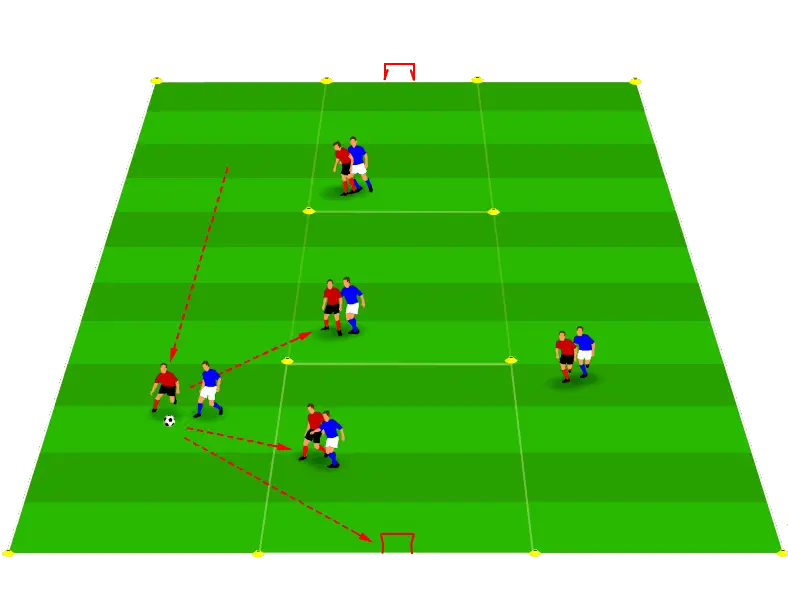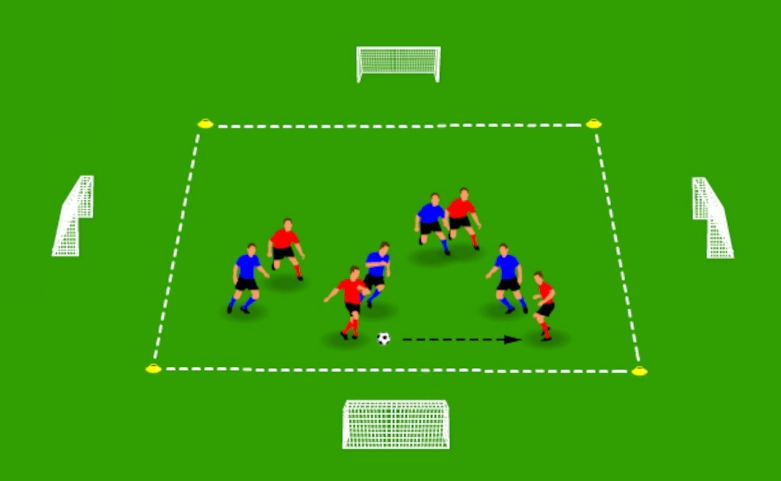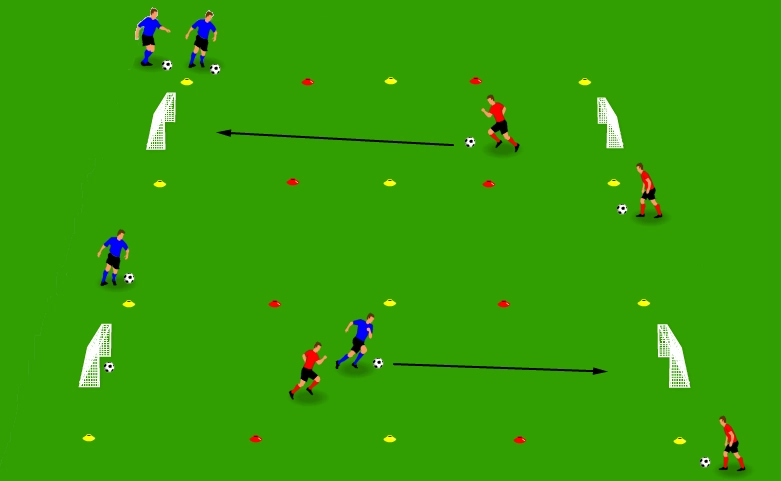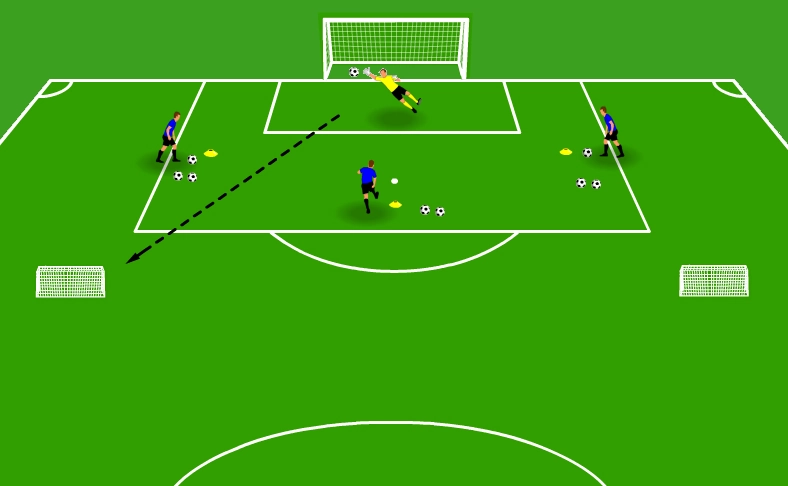Winger training drill: The Swimming Lanes

Wingers need to be good at taking players one-on-one, crossing the ball and scoring. Many winger drills focus on these individual skills. However, depending on the formation used by your team, wingers can become extra defenders. This post describes a winger training drill designed to simulate a real scenario involving them in attack as well as defence.
Setup
The Swimming Lanes drill is named after its setup: two swimming lanes (wings), two defensive zones and a midfield. Use cones to create the zones and two small goals on each side of the pitch.
Although the exercise is designed for 5 players on each side, the pitch should be as big as a 7-a-side field. This pitch size provides more running space for the wingers. You could create a bigger pitch for more players by adding more interior zones. However, a large number of players will distract from the drill’s main objective, which is training your wingers.
Instructions
The main objective of this drill is to practice defence and attack using your wings. The basic rules of the game are:
- 2 teams of 5 players.
- 2 players per zone.
- Players must stay in their zones.
- Only 3 touches are allowed (e.g.: 1 touch to control the ball, 1 touch to change direction and 1 touch to pass the ball).
- Players can only pass the ball to a contiguous zone (defenders can’t hoof the ball to attackers).
- Only wingers and attackers can score.
There are some variations to this game that you may want to consider. Often a conflict between teams is that a player stays in front of the small goal all the time, so a variation is to delimit an area around the goal where nobody can step in. Another interesting variation is to allow unlimited touches of the ball to the team that scores. The opposition must score to reestablish limited touches and score again to gain unlimited touches.
Be creative and add your own rules.
Takeaways
While other football winger training drills are designed to improve individual skills (e.g.: crossing and shooting), this exercise develops the team game when using wingers.
- Passing. Since limited touches are allowed, players need to circulate the ball around and, in the process, improve their passing technique.
- Finishing. Because the game is played with small goals, it encourages a clinical finish.
- Playing as a team. Although individual skills play a part in the game, limiting the time players can hold the ball forces everyone to play as a team.
- Players positioning. Players are forced to stay in their zone but still have to intercept passes or offer options to a teammate with control of the ball.
- Winger stamina. This exercise is extremely intense for wingers. They are running all the time, either to defend or to attack.
- Playing with wingers. The whole team needs to understand the role of the wingers. Midfielders and defenders need to know when to pass the ball to an empty space for the winger to run after it. Attackers need to be ready to receive crosses from wingers. Defenders can rely on the winger to come back to assist on defence. And many other variants.



